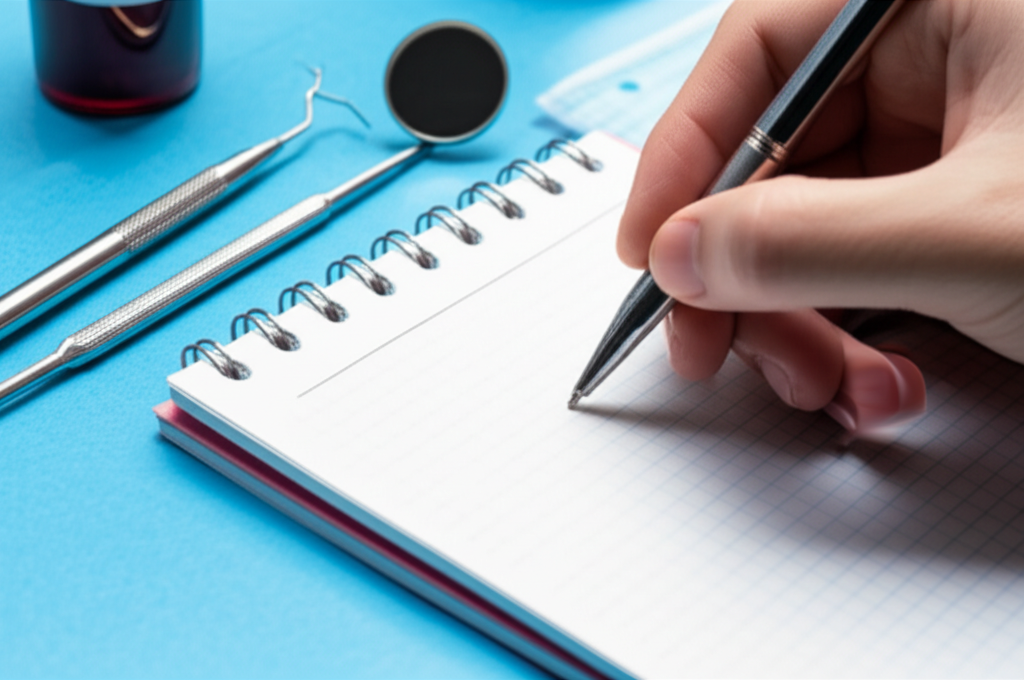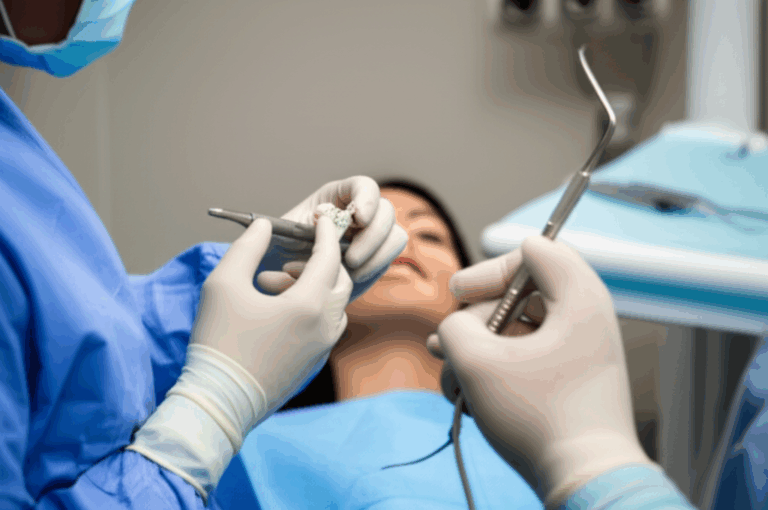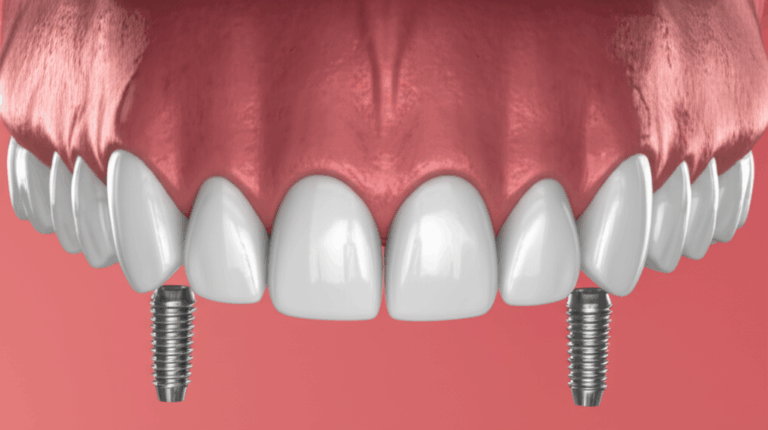
How to Write Dental Clinical Notes: My Personal Roadmap for Dentists and Staff
Table of Contents
- Introduction: Why Dental Clinical Notes Are the Unsung Hero of Dentistry
- I. The Foundation: Core Principles & Why Good Notes Matter
- A. Beyond Patient Care: The Multifaceted Value of Documentation
- B. Pillars of Effective Dental Documentation
- II. Deconstructing the Dental Clinical Note: Essential Components
- A. Administrative & Patient Identification
- B. Patient Presentation & History
- C. Examination Findings & Diagnosis
- D. Treatment Planning & Procedure Details
- E. Post-Treatment & Future Care
- F. Authentication
- III. Standardized Note-Taking Formats for Dentistry
- A. SOAP Notes: Subjective, Objective, Assessment, Plan
- B. Other Structured Methods
- IV. Documenting Specific Scenarios & Procedures
- A. Initial Comprehensive Examination
- B. Progress Notes for Treatment
- C. Dental Hygiene Appointments
- D. Emergency Visits & Acute Care
- E. Critical Communications
- V. The Digital Advantage: Leveraging Electronic Dental Records (EDR/EHR)
- A. Benefits of EDR Systems
- B. Optimizing EDR Usage
- C. Best Practices for Digital Notes
- VI. Navigating the Legal Landscape: Compliance & Risk Mitigation
- A. HIPAA & Patient Confidentiality
- B. State Dental Board Requirements
- C. Malpractice Prevention & Record Retention
- D. Amending Records Properly
- VII. Practical Tips for Elevating Your Note-Writing Skills
- Conclusion: Why Mastering Clinical Notes Is Worth the Effort
Introduction: Why Dental Clinical Notes Are the Unsung Hero of Dentistry
When I first got started with dentistry, I thought the most important things were my hands. Drilling, filling, checking teeth—the usual dentist stuff. But I found out one of my biggest tools wasn’t in my hands. It was my pen or keyboard. Dental clinical notes are really the base of safe, fair, and good care for every patient.
These notes aren’t just for me. They help the whole team, protect my job, and make sure my patients get good care—even years later. If you ever wondered how to write dental clinical notes that tick every box—right, by the law, helpful, fast—I want to show you what works for me and why it matters.
I. The Foundation: Core Principles & Why Good Notes Matter
A. Beyond Patient Care: The Multifaceted Value of Documentation
You might think, ‘Aren’t clinical notes just for the dentist or hygienist?’ Not at all. Let me show how they help in many ways:
- Patient Safety & Keeping Care Going
Good notes keep track of everything—meds, allergies, old problems. Years later, these details really matter. One time, a patient came in and barely remembered a latex allergy. My notes stopped a big problem.
- Legal Protection & Avoiding Trouble
If anything bad happens, or I get checked by the board, my clear notes are my best help. I heard about another dentist who avoided a lawsuit because his SOAP notes were solid.
- Insurance Claims & Billing
Insurance wants proof. My notes say what I did, so claims go smoother.
- Easy Team Communication
In busy offices, people see many dentists. Clear notes mean nothing is missing, even if you weren’t the treating provider.
- Quality Checks & Rules
Audits happen in dental offices. Good notes keep me ready and following the rules.
B. Pillars of Effective Dental Documentation
I use a simple list. For every note, I ask:
- Is it right?
I write only what’s true—no guesses.
- Is it clear and simple?
I think about someone else reading it a year later. Would they get it? I keep out hard medical words.
- Is it complete?
Even if I repeat, I make sure everything needed is in there.
- Is it on time?
Doing notes right after care keeps it right.
- Do I keep it private?
HIPAA is not just a rule—it’s my promise to patients.
II. Deconstructing the Dental Clinical Note: Essential Components
A good clinical note, whichever system you use, needs a few basics. Here’s my checklist:
A. Administrative & Patient Identification
This is where I always start.
- Patient basics: Full name, birthday, patient number.
- Date and time: Not just the day—if they come twice in one day, timing is key.
- Who helped: Who took care of the patient and who did what.
B. Patient Presentation & History
This part is often missed in a hurry, but super important.
- Chief Complaint (CC): I write what the patient says in their own words. Sometimes it gives clues I wouldn’t get otherwise. (‘It throbs all night’ means a lot!)
- Medical history (MHx): Every time, I check allergies, pills, and health changes. Once I found a new heart murmur here—it was a small note, but big for the patient.
- Dental history (DHx): Past work, current pain, brushing/flossing habits.
C. Examination Findings & Diagnosis
This is the main part.
- Exam details: What did I see? Mouth, jaw, TMJ, neck, and gum checks.
- X-ray checks: What’s new on X-rays?
- Gum charting: Probing numbers, gum loss, bleeding, loose teeth—numbers count.
- Old repairs or bite: Old fillings, new holes, bite, wearing down.
- Diagnosis: I write what I decided and which codes I used.
D. Treatment Planning & Procedure Details
Here, I’m as open as possible.
- Care plan talks: I list all the choices we chatted about, not only what they picked—risks, good and bad, and other choices.
- Saying yes: I note that we talked about everything, and all questions were answered.
- Procedure done: I don’t just write, ‘Did a filling.’ I say what I used, numbing meds, what I did step by step, any problems, and how I fixed them.
E. Post-Treatment & Future Care
I never let a patient leave without advice, and I show it in my notes.
- Post-op advice: What tips did I give? Did they get it?
- Next steps: Next visit time, checkups, or sending them to specialists.
F. Authentication
- Signature: Digital or by hand, with my job title.
If I’m using a system, an e-signature and date/time finish it.
III. Standardized Note-Taking Formats for Dentistry
Through the years, I tried lots of ways. I like SOAP notes best, but here’s a few kinds.
A. SOAP Notes: Subjective, Objective, Assessment, Plan
How I do SOAP notes:
- Subjective:
What the patient says—where it hurts, what troubles them, worries, history.
Example: “Patient says there’s a sharp pain in lower right tooth when drinking cold water.”
- Objective:
What I see and test—exam, X-rays, probe numbers.
Example: “Tooth #30 hurts when tapped; X-ray shows dark spot at the root.”
- Assessment:
My call about what’s wrong. I name the problem, write down the code.
Example: “Bad nerve pain, tooth #30.”
- Plan:
What I will do—treatment, teaching, checking later, medicine, or sending them elsewhere.
Example: “Talked about root canal. Patient agreed. Started RCT, gave prescription for amoxicillin.”
B. Other Structured Methods
Some people use:
- ADPIE (Assessment, Diagnosis, Planning, Implementation, Evaluation): Mostly for hygiene appointments.
- Problem-Oriented Dental Records (PODR): Problem, care given, and how things go—good for tracking over time.
If you’re looking for adding a digital lab, you might see how a digital dental lab can help with EDR notes and prosthetic cases.
IV. Documenting Specific Scenarios & Procedures
Different visits need different notes. Here’s how I do each type:
A. Initial Comprehensive Examination
This one is long and covers all:
- Baseline for everything: full history, full chart, X-rays, inside/outside mouth check.
- Diagnosis with details.
- I write about patient risks, like getting cavities or gum problems.
B. Progress Notes for Treatment
For any treatment like fillings or pulling teeth, I always:
- Note why the patient came today.
- List every step from numbing to the end, even small problems.
- Write down all the stuff I used.
I do the same when I order lab work, like a crown with my crown and bridge lab.
C. Dental Hygiene Appointments
Here, I focus on:
- Gum numbers, bleeding areas.
- Brushing and flossing tips I gave.
- Treatments to stop cavities, like fluoride.
- If the patient understood and agreed.
D. Emergency Visits & Acute Care
Even though things move fast, I don’t rush my notes:
- Why did they come and how long has it hurt?
- What did I find—be exact, even when rushed.
- Quick relief given (like meds).
- Plan for next steps.
E. Critical Communications
I’m extra careful here—these could save me later.
- Informed refusal: If the patient says no to a needed treatment, I write down what I said and what they decided.
- Referrals: Why I sent them, who I sent them to, and if I sent papers.
- Prescriptions: Which drug, how much, why.
- Talking to other doctors: Date, time, what we discussed and what we did.
If you work with removable teeth, having a linked removable denture lab can help your notes too.
V. The Digital Advantage: Leveraging Electronic Dental Records (EDR/EHR)
When I switched to EDR the first time, I missed my paper. But now, I can’t imagine not having it.
A. Benefits of EDR Systems
Here’s what I like:
- Easy to read: No more trying to read my messy writing.
- Easy to reach: I can get any note at any time.
- Safe: Data is locked up better than a paper file.
- Searchable: Want to know when we last did a veneer for someone? Three clicks—easy.
B. Optimizing EDR Usage
My suggestions:
- Templates: Good for common visits.
- Shortcuts: I set easy buttons for usual stuff.
- Use speech-to-text: Talking is easier on my hands.
- Backup often: I learned the hard way after my laptop crashed.
C. Best Practices for Digital Notes
- Turn on history logs—they help solve arguments.
- Each person should have their own password.
- Sign and time every entry.
- Always back up the data.
If you want to go more digital (like 3D planning), maybe look at a 3d dental lab to help your workflow.
VI. Navigating the Legal Landscape: Compliance & Risk Mitigation
If you ask why I’m careful with my notes, it’s not just for patients. It’s also so I can sleep at night.
A. HIPAA & Patient Confidentiality
I never send records in plain email. I teach my staff the right way to handle private stuff and shred any paper with info. The rules are not just for show—they’re serious.
B. State Dental Board Requirements
Check what your own state says. Sometimes you must keep records longer or add extra stuff like your license number. Don’t take chances; follow the book.
C. Malpractice Prevention & Record Retention
Did you know that writing good, fast notes is the best way to fight lawsuits? I never put off notes till the next day. If it’s not written, it didn’t happen.
I keep records at least 7 years, sometimes more for kids. Unsure? Keep it longer.
D. Amending Records Properly
Mistakes happen. If I fix something:
- I add a new note with today’s date, never erase the old.
- I say why I added or fixed it.
VII. Practical Tips for Elevating Your Note-Writing Skills
Here’s my best advice after many years in this job:
- Use templates and checklists. Whenever I don’t, I leave something out.
- Write notes right after the visit. If you wait, you forget.
- Write simple, skip doctor words. Imagine anyone reading.
- Point out what’s new or changed. It helps show what matters.
- Check for mistakes before signing. Small errors can get big.
- Learn and check as a group. Team checks catch things I don’t see.
- Get good digital tools. Voice typing, cloud saving, and backups are lifesavers.
If you want help with tough tooth cases, see what a china dental lab can do for your note taking and keeping cases organized.
Conclusion: Why Mastering Clinical Notes Is Worth the Effort
Getting good at clinical notes took time, patience, and lots of learning from little mistakes. But now, I can’t see doing my job any other way. Dental notes aren’t just paperwork—they keep me safe, remind me of things, help my team, and show I care about my work.
If you’re new at this, stick to the plan, write everything, and keep getting better. Your patients—and your future self—will be glad.
Remember, notes aren’t just checking boxes. They show you care for every patient like you’ll see them again one day. Because you just might. And when you do, you’ll be happy you wrote those notes like someone’s health, safety, or your license depended on it. Because sometimes, it really does.








